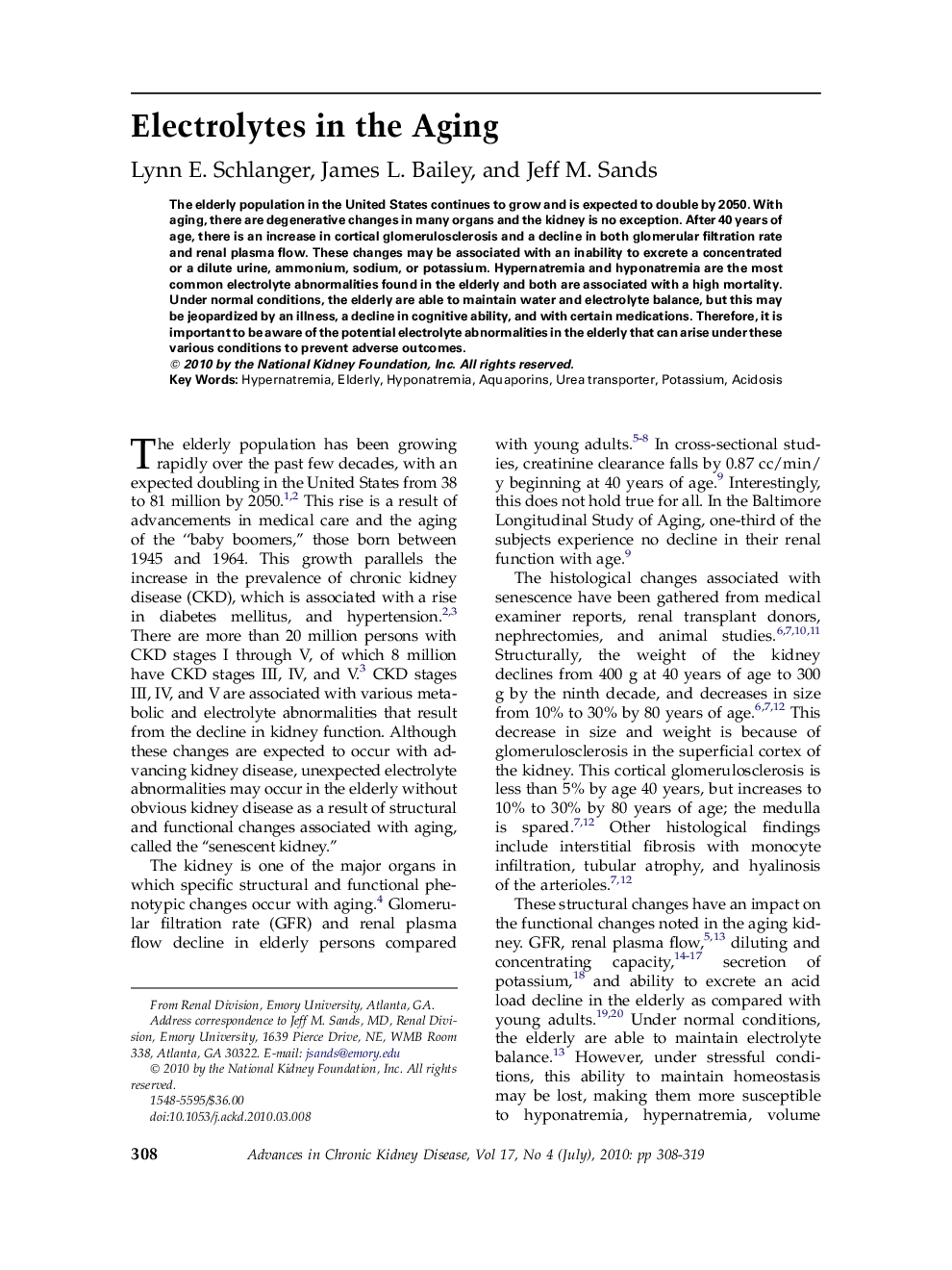| Article ID | Journal | Published Year | Pages | File Type |
|---|---|---|---|---|
| 3846724 | Advances in Chronic Kidney Disease | 2010 | 12 Pages |
Abstract
The elderly population in the United States continues to grow and is expected to double by 2050. With aging, there are degenerative changes in many organs and the kidney is no exception. After 40 years of age, there is an increase in cortical glomerulosclerosis and a decline in both glomerular filtration rate and renal plasma flow. These changes may be associated with an inability to excrete a concentrated or a dilute urine, ammonium, sodium, or potassium. Hypernatremia and hyponatremia are the most common electrolyte abnormalities found in the elderly and both are associated with a high mortality. Under normal conditions, the elderly are able to maintain water and electrolyte balance, but this may be jeopardized by an illness, a decline in cognitive ability, and with certain medications. Therefore, it is important to be aware of the potential electrolyte abnormalities in the elderly that can arise under these various conditions to prevent adverse outcomes.
Related Topics
Health Sciences
Medicine and Dentistry
Nephrology
Authors
Lynn E. Schlanger, James L. Bailey, Jeff M. Sands,
